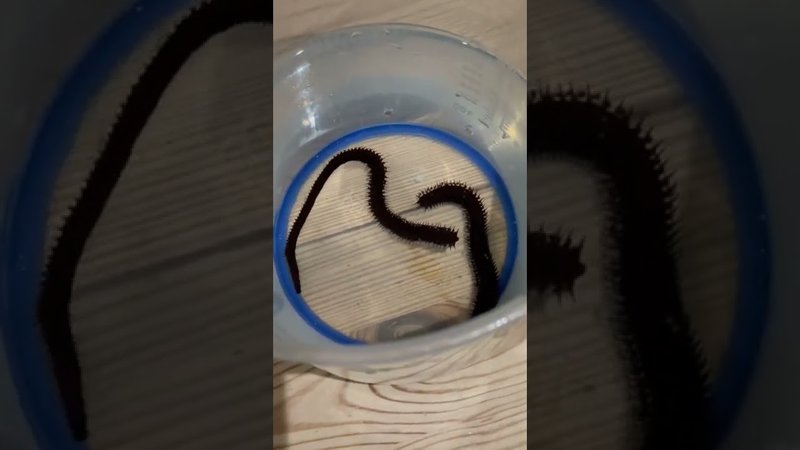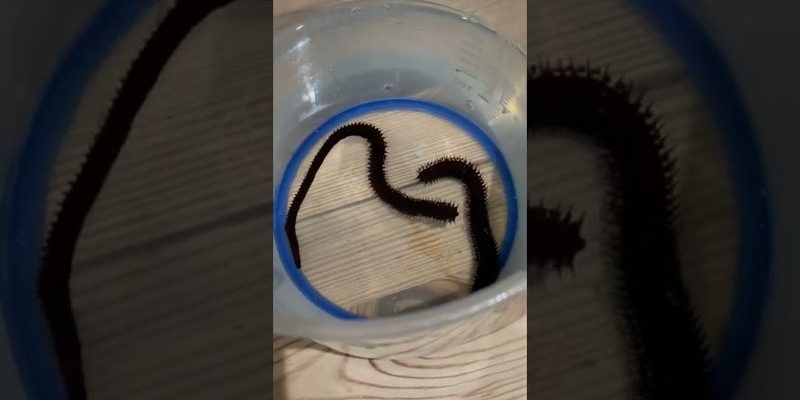
Imagine having a beautiful, clear aquarium filled with vibrant fish and lush plants, only to find out that your new worm has caused some chaos. Like an unexpected guest in the living room, Bobbit worms can be a bit unpredictable. So, let’s dive into what makes these worms tick and whether they pose a risk to your aquarium’s structure.
Understanding Bobbit Worms: The Basics
Bobbit worms, scientifically known as *Eunice aphroditois*, are marine polychaete worms that belong to the family Eunicidae. These worms are typically found buried in ocean sands and mud, with only their distinctive heads popping out. The excitement around Bobbit worms comes from their ability to swiftly snatch unsuspecting prey with their powerful jaws, which can resemble something out of a science fiction novel.
These worms are not just random creatures you might stumble upon during a beach walk. They play a significant role in their ecosystems, helping with the breakdown of organic materials. However, their fierce predatory nature and size often raise a few eyebrows when it comes to keeping them in home aquariums.
The Anatomy of a Bobbit Worm
Let’s take a closer look at what makes Bobbit worms so interesting. Their long, segmented bodies can reach impressive lengths, with some individuals measuring nearly 10 feet! This length gives them a notable advantage for hunting, but it can also lead to concerns about tank safety.
Their mouth contains sharp jaws that can inflict pain and grab prey like a champ. With this capability, it’s easy to see why some aquarium owners might fear for the integrity of their tank. But before jumping to conclusions, let’s examine how these worms interact with their environment and whether they have the ability to pierce acrylic or glass.
Do Bobbit Worms Have the Ability to Damage Tanks?
Here’s the thing: while Bobbit worms are natural-born predators capable of causing a scene in the wild, their ability to cause damage to an aquarium’s structure is limited. Both acrylic and glass tanks are generally more robust than you might think.
– Glass Tanks: These tanks are sturdy and designed to hold water without bending under pressure. The chances of a Bobbit worm piercing glass are extremely low. The thick structure of glass means it would take a considerable amount of force to create a hole, which these worms simply don’t possess.
– Acrylic Tanks: Acrylic, while lighter than glass, is also quite durable. It can scratch, but those scratches typically come from external factors like tank maintenance tools. A Bobbit worm’s natural behavior wouldn’t include burrowing through acrylic walls; they simply don’t have the anatomy for it.
Ultimately, while they can cause chaos within the tank if they start eating other inhabitants, the actual risk of them piercing the tank material is minimal.
Tank Material and Safety: What You Need to Know
If you’re still on the fence about whether to introduce a Bobbit worm into your aquarium, it’s essential to consider your tank type and your aquascaping choices. Both acrylic and glass tanks have their pros and cons.
Acrylic Advantages:
– Lightweight: Easier to move and set up.
– Flexibility: Less likely to shatter than glass.
Glass Advantages:
– Scratch Resistance: More durable against equipment and cleaning tools.
– Clarity: Generally offers better optics over time.
Ultimately, choosing the right tank material boils down to your personal preference and setup. A well-maintained glass tank can be just as safe as an acrylic one, providing you with a fantastic view of your aquatic life, including your potential Bobbit worm.
Maintaining a Healthy Environment for Bobbit Worms
Keeping a Bobbit worm in your tank means creating an environment that mimics their natural habitat. These worms thrive in sandy or muddy substrates, where they can burrow and hide. If you’re planning to house one, consider the following:
– Substrate Depth: Choose a substrate that allows for burrowing. Fine sand is often a good option since it mimics their natural environment.
– Tank Mates: Bobbit worms can be aggressive, so be cautious when selecting tank mates. They may eat smaller fish or critters that venture too close.
– Water Quality: Maintaining proper water conditions is crucial. Regular testing and monitoring will ensure your tank remains a safe haven for all inhabitants.
What to Do if Your Bobbit Worm Causes Trouble
If you’re already housing a Bobbit worm and notice signs of trouble—like missing fish or aggressive behavior—there are steps you can take to mitigate the situation. Here’s what to consider:
1. Reassess Tank Mates: If your Bobbit worm is preying on its neighbors, it may be time to separate them. Consider housing the worm in a dedicated tank where it can thrive without causing havoc.
2. Provide Hiding Spots: Creating more hiding spaces can redirect the Bobbit worm’s attention from fish to its burrow, allowing both to coexist more peacefully.
3. Monitor Behavior: Pay attention to your aquarium’s dynamics. If the worm’s predatory nature disrupts the ecosystem, you may need to consider rehoming it.
In conclusion, while Bobbit worms are undeniably fascinating and can add some drama to your aquarium, they won’t damage your acrylic or glass tanks. Understanding their natural behavior and needs can help you create a thriving environment that works for both you and your aquatic pets.
As with any living creature, being informed and prepared is key. So, whether you’re all in for the adventure or still teetering on the edge of decision-making, you should feel confident about the safety of your tank. Happy aquascaping!

